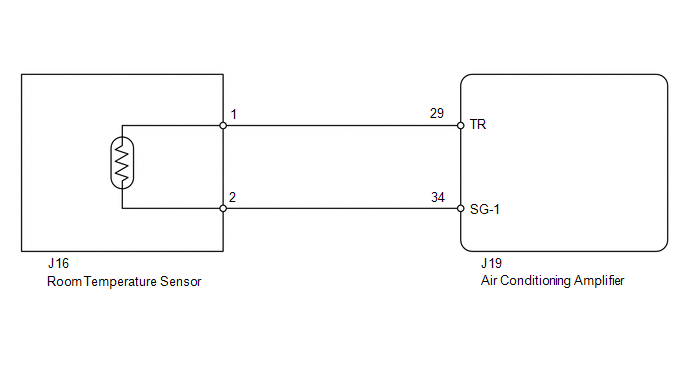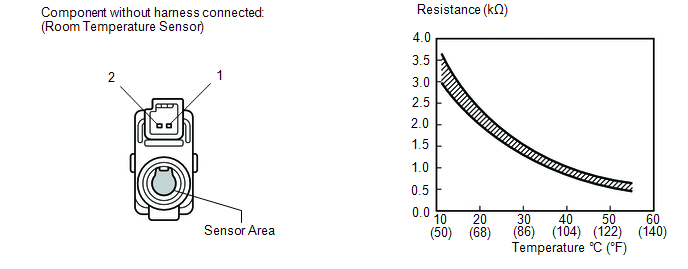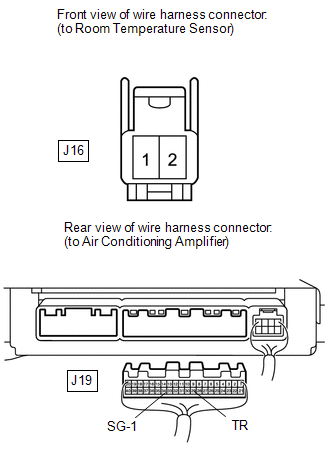DESCRIPTION The room temperature sensor is installed in the instrument panel to detect the room temperature and control the heater and air conditioner "AUTO" mode. The resistance of the room temperature sensor changes in accordance with the room temperature. As the temperature decreases, the resistance increases. As the temperature increases, the resistance decreases. The air conditioning amplifier applies voltage (5 V) to the room temperature sensor and reads voltage changes as the resistance of the room temperature sensor changes. This sensor also sends the appropriate signals to the air conditioning amplifier.
WIRING DIAGRAM 
PROCEDURE
(a) Use the Data List to check if the room temperature sensor is functioning properly. Air Conditioner
OK: The display is as specified in the normal condition. Result

(a) Remove the room temperature sensor (see page
(b) Measure the resistance according to the value(s) in the table below. Standard resistance:
NOTICE:
HINT: As the temperature increases, the resistance decreases (see the graph).

(a) Disconnect the J16 sensor connector. (b) Disconnect the J19 air conditioning amplifier connector. (c) Measure the resistance according to the value(s) in the table below. Standard resistance:
|
Toyota Tundra Service Manual > Touch Select 2-4 And High-low System: Dtc Check / Clear
DTC CHECK / CLEAR 1. CHECK DTC (a) Check the DTCs. (1) Connect the Techstream to the DLC3. (2) Turn the ignition switch to ON. (3) Turn the Techstream on. (4) Read the DTCs following the prompts on the Techstream screen. Enter the following menus: Chassis / Four Wheel Drive / Trouble Codes. (5) Chec ...